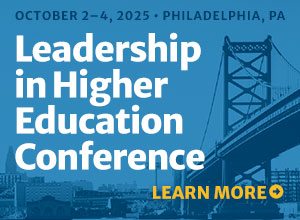Dos and Don’ts for Prospective Department Chairs
Have you ever considered becoming a head of an academic department? If the answer is yes, what follows should give you plenty of useful information. If the answer is maybe, it can help you make the decision. Even if the answer is no, it might change your mind. Let us...
Improving Support for Non-Tenure-Track Faculty
Academic administrators are well aware that the faculty has changed dramatically, with 70 percent of the faculty now off the tenure track (52 percent part-time and 18 percent full-time, non–tenure track) (American Association of University Professors, 2018). This transformation of academic positions over the past three decades has created an...
Dealing with Negativity and Conflict
During my 11-year tenure as a department head, it became clear to me that most of us enter administration because we are optimistic individuals who want to help our academic units to grow and develop, change with the times, and thrive despite obstacles. We see our faculty and our budgets...
Let’s Start from the Very Beginning: Implicit Bias Conversations for Faculty Search Committees
There is a great deal of discussion in higher education about how to create diverse, equitable, and inclusive campuses. Tufts is not unique in its desire to diversify its faculty to better mirror the student population. One challenge in achieving this goal is implicit bias—that is, attitudes or stereotypes that...
Exhaustion’s Toll on the Next Generation of Female Academic Leaders
I’m sure you have seen the articles describing the decrease in women’s submissions to top research journals since the pandemic began in the spring (e.g., Flaherty, 2020, Viglione, 2020). The media has also been full of stories about the toll that working from home is taking on those who have...
Adaptive Learning for Faculty Development: Technology Considerations
One challenge of faculty development and training for online teaching is satisfying instructors with different levels of knowledge, skills, and experience. At our institution, we discovered that this challenge can be overcome by employing an adaptive learning strategy in our faculty development courses. Adaptive learning technologies assess an individual learner’s...
The Faculty’s Role in Closing Equity Gaps: Academic Policies and Practices
Since the spring of 2020, predominantly White institutions (PWIs) of higher education have felt understandable pressure to examine everything we do through an equity lens. Colleges and universities have, for example, turned a spotlight on admissions practices that have disproportionately benefited upper-middle class students. We have also begun to rethink financial aid...
The Value of Intergenerational Faculty Mentoring
For the most part, US higher education has not recognized the value of intergenerational workforce practices as a valuable source of expertise and transmission of institutional knowledge. But faculty mentoring programs are the exception: they represent one of the most highly developed intergenerational practices in higher education today. These programs...
Five Ways Administrators Can Show Faculty Support
In the summer of 2017 while I was teaching a graduate education course in China, in oppressive heat, my administrator provided cool water and fresh fruit—a small token that made a big impression on me. Having worked 42 years in educational institutions, I have witnessed what true administrative support feels...
It’s Not Just a Series of Workshops: Reevaluating Faculty Development to Improve Recruitment, Retention, and Tenurability of Faculty
In my experience with faculty recruitment at two very different academic institutions, I have learned that faculty candidates care a lot about what support they can expect for their professional development; it’s one of the most common questions I hear. Institutions typically hire faculty whom they want to keep and,...












